
Casting for trout in one of Tributary’s seven ponds in southeast Idaho
Sports
Fly Fishing: An Artful Immersion into Pristine Wilds
by Shaun Tolson
“One of life’s quiet excitements is to stand somewhat apart from yourself and watch yourself softly becoming the author of something beautiful,” writes Norman Maclean in his seminal A River Runs Through It.
The short story reads like an autobiographical elegy about fly-fishing on the Blackfoot River in Montana. Maclean’s eloquent prose is as lyrical as it is true when describing the act of casting with a fly rod, which is why many anglers, once they’ve discovered the sport, choose only to fish that way. Whether wading through cool, spring-fed creeks and streams or perched on drift boats gently floating down swift-moving rivers, fly-fishermen are as connected to the natural world around them as they are absorbed in a pursuit of rhythmic perfection.
While you can fly-fish almost anywhere, there are a handful of truly spellbinding places where the fishing is sublime and the experiences are transformative. Best of all, those locales are home to both private clubs and public lodges that can serve as gateways to unforgettable casting—and catching.
The short story reads like an autobiographical elegy about fly-fishing on the Blackfoot River in Montana. Maclean’s eloquent prose is as lyrical as it is true when describing the act of casting with a fly rod, which is why many anglers, once they’ve discovered the sport, choose only to fish that way. Whether wading through cool, spring-fed creeks and streams or perched on drift boats gently floating down swift-moving rivers, fly-fishermen are as connected to the natural world around them as they are absorbed in a pursuit of rhythmic perfection.
While you can fly-fish almost anywhere, there are a handful of truly spellbinding places where the fishing is sublime and the experiences are transformative. Best of all, those locales are home to both private clubs and public lodges that can serve as gateways to unforgettable casting—and catching.
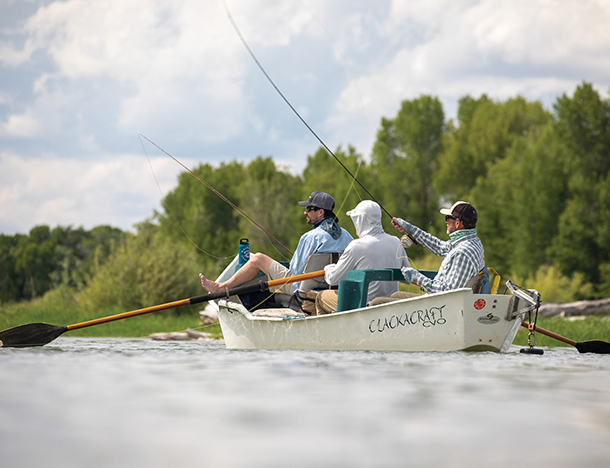
Idaho’s Snake River
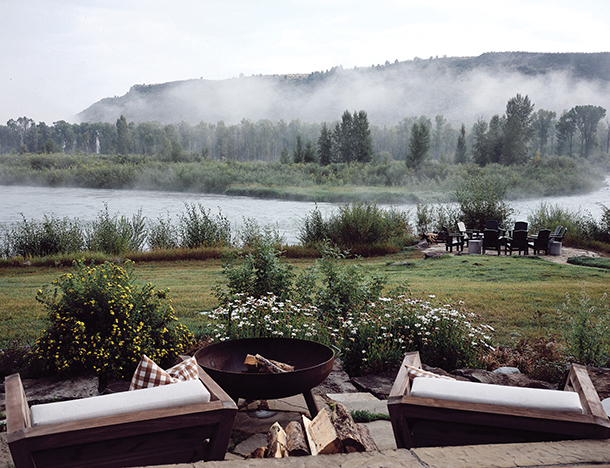
Idaho’s South Fork Lodge, along its banks
The American West
Floating down the South Fork of the Snake River in southeastern Idaho, about 250 miles south of the Blackfoot, a guide points out a swirling stream a few yards from shore. From his position near the center of the river, the angler casts his line and lands a surface-floating fly in the ideal spot. Moments later, a large brown trout breaks the surface of the water. “Get it!” the guide shouts.The fisherman pulls back hard on the rod to set the hook, the rod bends acutely, and after transferring the stripped line from his left hand to a secure spot under his right forefinger at the base of the rod, the angler is ready to fight—and hopefully reel in—a 20-inch brown trout.
“It’s a process-driven pursuit,” says Oliver White, the general manager of South Fork Lodge (southforklodge.com). “And the pinnacle is to catch a big trout on a dry fly.” The 36-room lodge, which includes six three-bedroom A-frames and two five-bedroom cabins, is accented by vintage fly-fishing books, prints, and other mementos that Jimmy Kimmel—the lodge’s co-owner—has collected over the years. In the bar area find a vintage Evel Knievel–themed pinball machine, circa 1977, which is a nod to Knievel’s famous attempt to jump the Snake River canyon in a steam-powered rocket in 1974. (It also serves as Kimmel’s homage to the daredevil he grew up admiring.)
Despite the establishment’s warm and character-rich ambiance, its superlative hospitality, and delectable cuisine, the South Fork Lodge’s most compelling trait is its location. “The proximity to the river is what makes it so special here,” Kimmel says. Considering that the South Fork flows for more than 60 miles—with 5,000 trout swimming in it per mile—it’s hard to argue. “It’s not a technically difficult river and it’s not a hard river to fish,” Kimmel explains. “If you come here—whether you are a beginner or an expert—you are going to catch some trout.”
The diverse and abundant fly-fishing opportunities that exist in this section of southeast Idaho on the South Fork, Henry’s Fork, and the Teton River are what ultimately lured angler Matt Eastman away from Park City, Utah. “There are so many different rivers. You can chase the [insect] hatches all summer and always have somewhere epic to fish,” says Eastman, who serves as the director of recreation at the private community Tributary (tributaryidaho.com). “That’s the beauty of fishing around here. You’re in a magical place catching these amazing fish.”
Members who belong to Tributary, located in the historic small town of Driggs, can easily secure guided charters on any of those rivers through nearby Teton Valley Lodge (tetonvalleylodge.com), and as Eastman acknowledges, either Tributary or the lodge can provide all the necessary gear. Additionally, members can fly-fish even closer to home on any of the club’s seven ponds, which range in size between 2 and 4 acres, and all are home to brook, rainbow, and cutthroat trout.
“It’s like walking through your own private sanctuary,” Eastman says of the protected, 500-acre fen that makes up part of the club’s 1,500 total acres. “You walk out your backdoor and you’ve got a chance to catch a 10-pound trout. You might be five minutes from your home, but you’ll still feel far away from everything.”
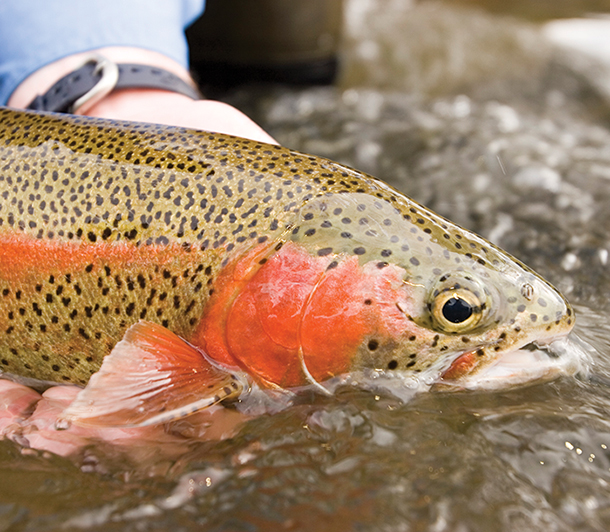
Rainbow Trout
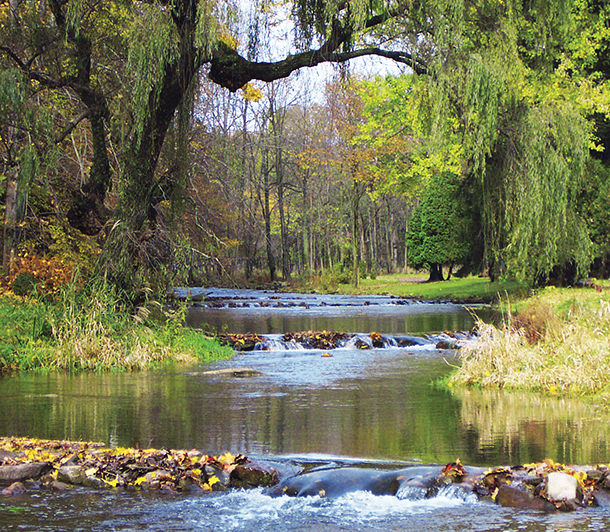
Spruce Creek, which flows through the HomeWaters Club property
Central Pennsylvania
Many of America’s foremost anglers and authors have declared the heart of the Keystone State the epicenter of American fly-fishing. More than 86,000 miles of rivers, streams, and creeks flow through Pennsylvania, almost 16,000 of which are designated as wild trout fisheries.At the HomeWaters Club (homewatersclub.com), a members-only, fly-fishing haven with 10 miles of private and protected water, fisheries are spread out across five distinctive creeks and streams. “That’s one of the biggest things we offer our members, the advantage to fish sections of streams that are not heavily pressured,” says Mike Harpster, the club’s director of membership. “It makes a world of difference in the quality of the fishing.”
With that protection (and the fact that the club will allow its sections of creeks and rivers to rest as many days as they’re fished), the club’s private fisheries are teeming with brown and rainbow trout that can easily grow beyond 24 inches in length. For some HomeWaters Club members, those trophy fish are a significant draw, but as Harpster reveals, the club attracts avid fly fishermen who are motivated by a variety of factors. “First, they want to catch a fish, and then a lot of fish or a big fish. Eventually it just becomes about how they fish—they learn that they like to fish a certain way,” he says.
The majority of the club’s members live within a half day’s drive of the club and newcomers can be outfitted with rental equipment and a guide to teach the sport and ensure quick success. Regardless of ability level, all HomeWaters Club members enjoy the same feelings of exclusivity. “Any day that a member goes out to fish,” says Harpster, “they feel like they own the river that they’re fishing on.”
About 60 miles southeast of HomeWaters, another system of renowned creeks and rivers is waiting to be fished by the guests of Allenberry Resort (allenberry.com). The property is a 10-minute drive to LeTort Spring Run and 30 minutes from Big Spring Creek, which are both limestone, spring-fed creeks providing an ideal habitat for trout. “LeTort Spring Creek has a reputation for being such a difficult fishery,” says Dusty Wissmath, a longtime fishing guide who teaches fly-fishing classes at Allenberry. “The water is gin clear and the fish are easily spooked, but the payoff can be quite large—literally—with some amazing trout.” To catch native Eastern brook trout, guides who work for Relentless Fly Fishing (relentlessflyfishing.com) in nearby Shippensburg bring guests to faster-moving streams in higher elevations.
Flowing right along the back of the resort’s property is Yellow Breeches Creek, a heralded, limestone creek that is ideal for beginners and anyone wanting to wade and cast steps from their rooms. You can fish with dry flies for both trout and smallmouth bass during the summer. “It’s similar to fishing for trout on a bigger river,” Wissmath says. “Bass require the same techniques, but we’ll use popping bugs, dragonfly, or damselfly imitations.”
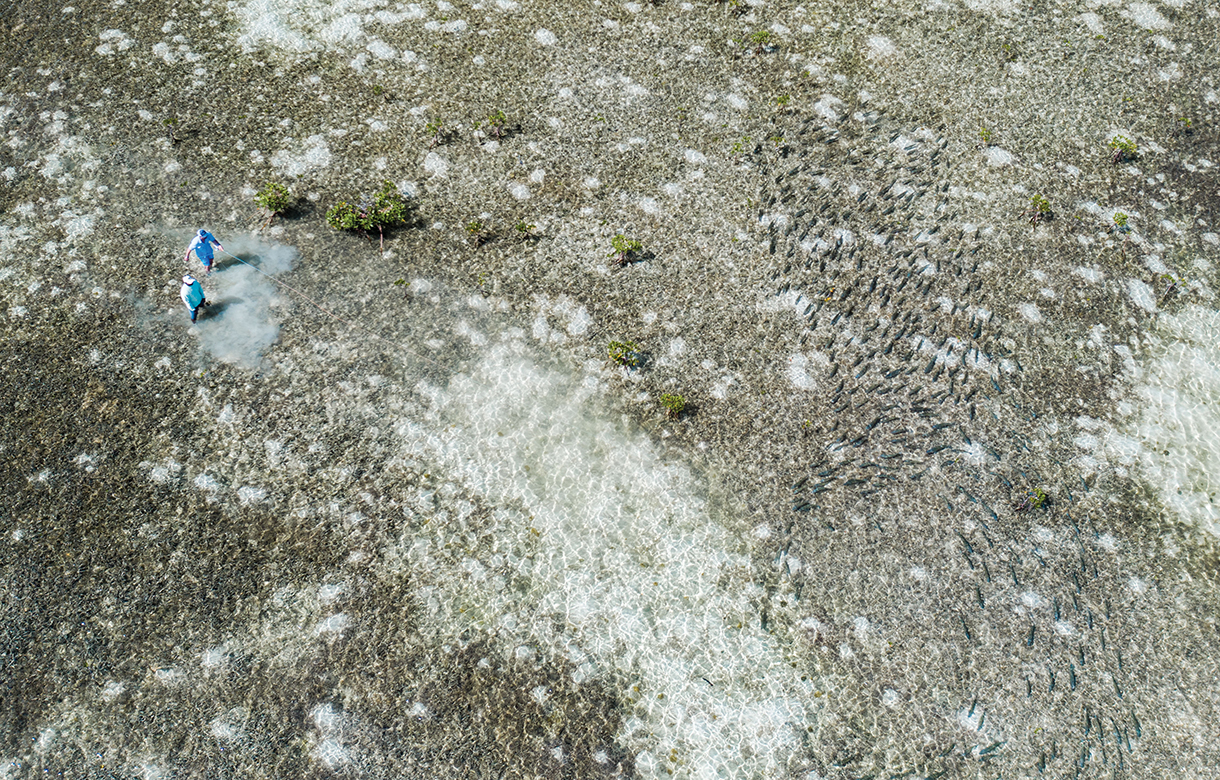
Bahamian Flats
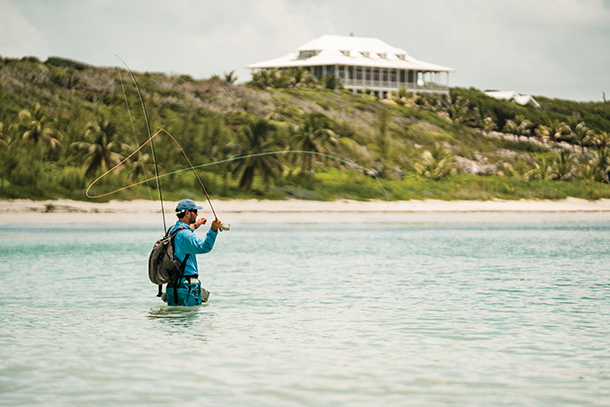
The Delphi Club
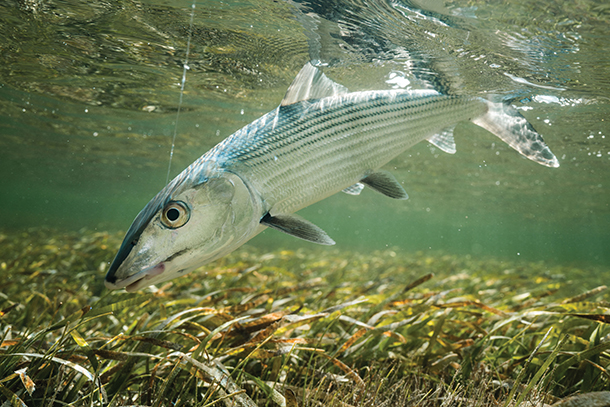
Bonefish
The Bahamas
Great Abaco Island, the largest Bahamian island, is arguably the bonefishing capital of the world. Just to its east, on a smaller cay, you’ll find residence club Baker’s Bay (discoverylandco.com), where fishing for bonefish and permit in the surrounding flats and shallow waters is, as Director of Real Estate Sales Geoffrey Jones describes it, a mix of hunting, stalking, and fishing.“The bonefish action is really what Abaco is now famous for,” he says. “Bonefish is the most electric, exciting, and strong fish—pound for pound—of any fish you’ll ever catch.”
About 10 percent of Baker’s Bay members own their skiffs, but the majority of club members will hire local guides to take them to any number of prolific fishing spots around the 120-mile-long island. According to Jones, those members don’t have to travel far, as the club has its own accessible flat. But catching fish in that flat can require a bit more skill than in other areas. “They see a lot of [artificial] flies all the time,” he says, “so they’re smarter than most fish.”
However, anglers at Baker’s Bay don’t even need a skiff to have a successful day fishing. “You can actually walk down the beach with a fly rod and fish for bonefish and permit,” Jones says. In fact, permit, which weigh up to 50 pounds, are quickly becoming the fly-fishing trophy fish in the Bahamas. “You might only catch four or five in a year,” he says, “so your heart’s racing [when you spot one] because the fish are about 10 times the size [of bonefish] and they’re much more particular about how they approach a fly. They have very good eyesight and they’re really skittish.”
At The Delphi Club (delphi-bahamas.com), a boutique bonefishing club on the eastern shore of Great Abaco (about 30 miles south of Baker’s Bay), bonefishing is what attracts 95 percent of the property’s guests, but permit fishing is on the rise. “It’s the holy grail of fly-fishing,” says Robert Ford, The Delphi Club’s managing director, who purchased the property with a small group of friends after enjoying it years earlier as a guest. The stately, two-story main guesthouse boasts an infinity pool steps from a secluded white-sand beach.
The lodge has two, new carbon-fiber Hell’s Bay boats, increasing the size of its fleet to six shallow-drawing skiffs. As Ford acknowledges, those boats “let you get into places that most people can’t.” Great Abaco is famous for The Marls, a sprawling expanse of shallow water punctuated by wilderness flats and mangrove stands that for years existed as an epic spot for bonefishing. Although Hurricane Dorian damaged the northern part of the Marls three years ago, Delphi Club guides continue to fish in the south as well as rely on a network of more secretive spots. “We have these little niche areas where not many people go, so they get less pressure,” Ford says.
Photo credits: Courtesy Tributary; Adam Barker; South Fork Lodge; Homewaters Club; The Delphi Club




